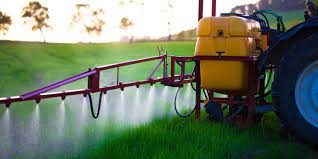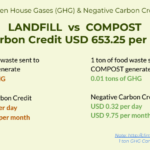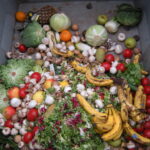Chemical Pesticides vs Microbes for Pest Control and Cost Effective
Chemical pesticides
 Chemical pesticides are highly used for crop production industry such as paddy, palm, rubber, corn, soybean, etc.. It is also highly used in golf course for grass maintenance.
Chemical pesticides are highly used for crop production industry such as paddy, palm, rubber, corn, soybean, etc.. It is also highly used in golf course for grass maintenance.
It is important to prioritize the health and safety of humans and the environment when considering chemical pesticides as pest control options. Additionally, the cost-effectiveness of a pesticide depends on various factors, including the type of pest, the severity of the infestation, and the effectiveness of the pesticide.
It is important to use chemical pesticides responsibly and in accordance with local regulations and guidelines. Before using any chemical pesticide, it is recommended to consult with a licensed pest control professional or a local agriculture extension office to identify the specific pest problem and recommend the best control options.
In some cases, non-chemical methods of pest control may be more cost-effective and environmentally friendly, such as using cultural controls like crop rotation, sanitation measures, or mechanical controls like trapping or exclusion to prevent pest infestations.
Ultimately, the most cost-effective and sustainable pest control solutions may depend on the specific circumstances and should be evaluated on a case-by-case basis. It is important to consider all available pest control options and prioritize the health and safety of people and the environment when making decisions.
Why am i using so much pesticides
It is important to use pesticides responsibly and in accordance with local regulations and guidelines. Using too much pesticide can have negative impacts on human health and the environment, including non-target species like beneficial insects and wildlife. Additionally, using too much pesticide can lead to pesticide resistance in target pest populations, which can make future pest control more difficult.
It is recommended to consult with a licensed pest control professional or a local agriculture extension office to identify the specific pest problem and recommend the best control options. In some cases, non-chemical methods of pest control may be more effective and environmentally friendly, such as using cultural controls like crop rotation or sanitation measures to prevent pest infestations.
Ultimately, it is important to prioritize the health and safety of people and the environment when considering any pest control options. Using the appropriate amount of pesticide is important to minimize negative impacts and ensure effective control of the pest problem.
Chemical pesticides compared with microbes
Chemical pesticides and microbes are two different types of pest control methods that have distinct advantages and disadvantages.
Chemical pesticides are synthetic compounds designed to kill or control pests. They are effective against a wide range of pests and can provide rapid control. However, they can also have negative impacts on human health and the environment, including non-target species like beneficial insects and wildlife, and can lead to pesticide resistance in target pest populations.
Microbes, on the other hand, are living organisms that can be used to control pests. They can be naturally occurring or artificially introduced, such as bacteria, viruses, fungi, and nematodes. Microbial pest control can be highly targeted, as certain microbes are specific to certain pests, and can have low environmental impact. Additionally, they can be used in organic farming systems.
However, microbial pest control can be slower and less effective than chemical pesticides, and may require multiple applications. Additionally, the effectiveness of microbial pest control can be affected by environmental conditions, such as temperature and humidity, and they may not be effective against all types of pests.
Ultimately, the choice between chemical pesticides and microbes will depend on the specific circumstances of the pest problem, the level of environmental impact that is acceptable, and the desired level of control. It is important to consider all available pest control options and prioritize the health and safety of people and the environment when making decisions.
Contact us
Every application area have different capacity, daily operation, and community behaviours. Therefore, application, dosage, and methodologies of the microbes need to be customised accordingly. And, normally its recommended to trial for at least 2 to 4 weeks, before a Standard Operating Procedure is designed.
email : sales [at] cemax [dot] com [dot] my whatsapp : +60 16 207 5400




